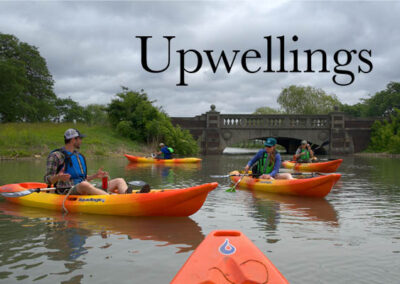Hello everyone, my name is Annie Waldron, and I have the absolute privilege of working as one of the Michigan Sea Grant Environmental Interns this summer. Growing up in West Michigan and spending my summers in the Upper Peninsula has consistently fueled my lifelong passion for the outdoors. Studying biology and environmental science at Hope College for the past three years has provided me with countless opportunities to pursue my calling to care for our planet and all the creatures that inhabit it.
Through my summer internship with Michigan Sea Grant, I am able to work full-time as a lead researcher on a project concerning the conservation of one of the oldest, and also one of the most vulnerable, fish species native to the Great Lakes: Lake Sturgeon. In addition to being charismatic giants, Lake Sturgeon are a difficult species to monitor at the individual level because of small population sizes in southwest Michigan, their seasonal movement patterns, and long lifespans. Under the mentorship of Dr. Jimena Golcher-Benavides at Hope College, I study DNA collected from water samples, referred to as environmental DNA or simply, “eDNA” from different locations to monitor Lake Sturgeon. This process not only provides insight into methods of conservation for the species, but also adds a new tool to the toolkit used for monitoring freshwater fishes. This method of eDNA monitoring is useful in the detection of both native and invasive aquatic species, helping us better promote the maintenance of healthy freshwater ecosystems.
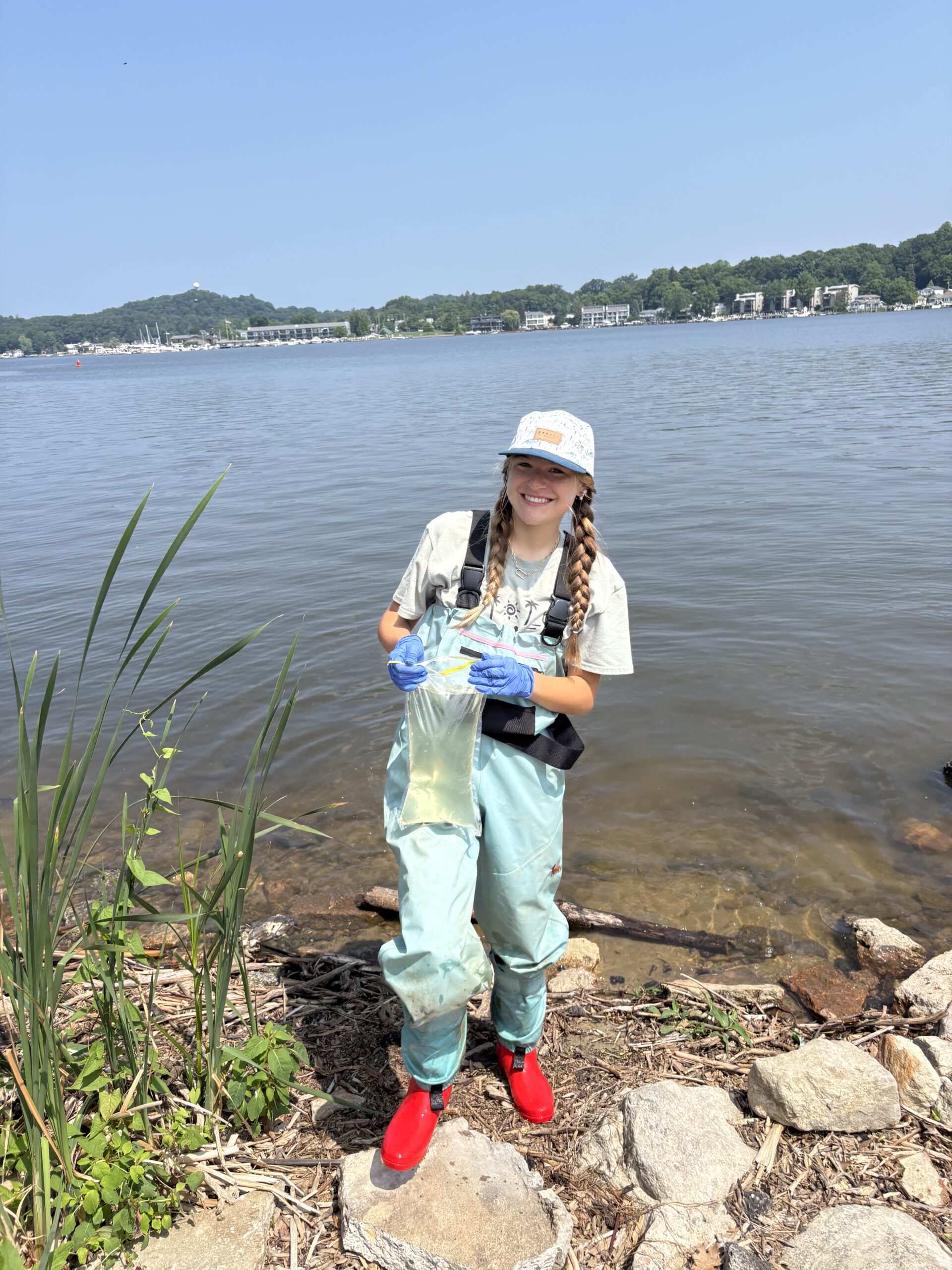
Collecting a water sample from Kalamazoo Lake at Douglas Veteran’s Park. Photo: Annie Waldron
The process begins with the collection of water samples from four different locations along a known Lake Sturgeon spawning route: Lake Michigan, Kalamazoo Lake, Kalamazoo River, and Rabbit River. Back in the lab, we filter one liter of each water sample through a very fine nitrocellulose filter. This filter has pores small enough to collect the DNA from the sample. After the DNA has been broken down through digestion and incubation, it is ready to be extracted using our QIACube Connect, a DNA extracting robot. After the robot finishes its run, we have tubes of extracted DNA from each sample, along with our negative control of filtered deionized water.
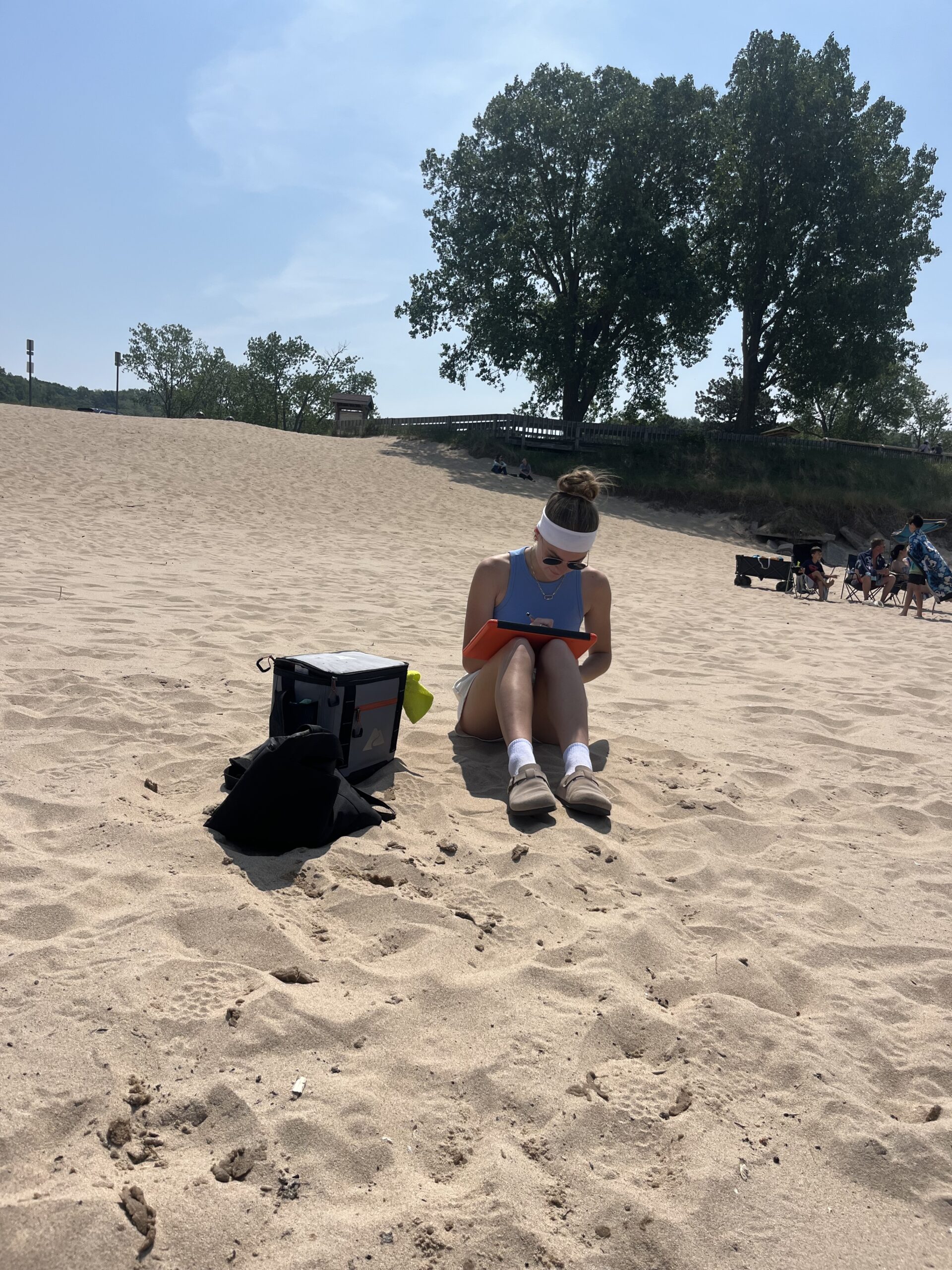
Recording environmental conditions at Oval Beach, our Lake Michigan sampling site. Photo: Annie Waldron
The extracted DNA is used for a process called Polymerase Chain Reaction, better known as PCR. This term may be familiar to some, as it is the same process used for COVID-19 tests. In order to target only the Lake Sturgeon eDNA present in the sample, we use a specific sequence of DNA that attaches to our target sequence; this is called a primer. Think of it like molecular fishing! These DNA primers, together with a fluorescent probe, are the lures that only Lake Sturgeon eDNA will “bite.” The fluorescence in the probe is used to highlight when the specific sequence of DNA is present. Thus, the probe also acts like the bobber in our fishing analogy — it lets us know when we have a positive detection of Lake Sturgeon in the sample. By using quantitative PCR, we learn which locations had Lake Sturgeon DNA in the water sample from a certain week. The qPCR results tell us how many copies were amplified for each site, and through a few calculations, we are able to determine the concentration of eDNA in each sample — which may correlate with the abundance of Lake Sturgeon!
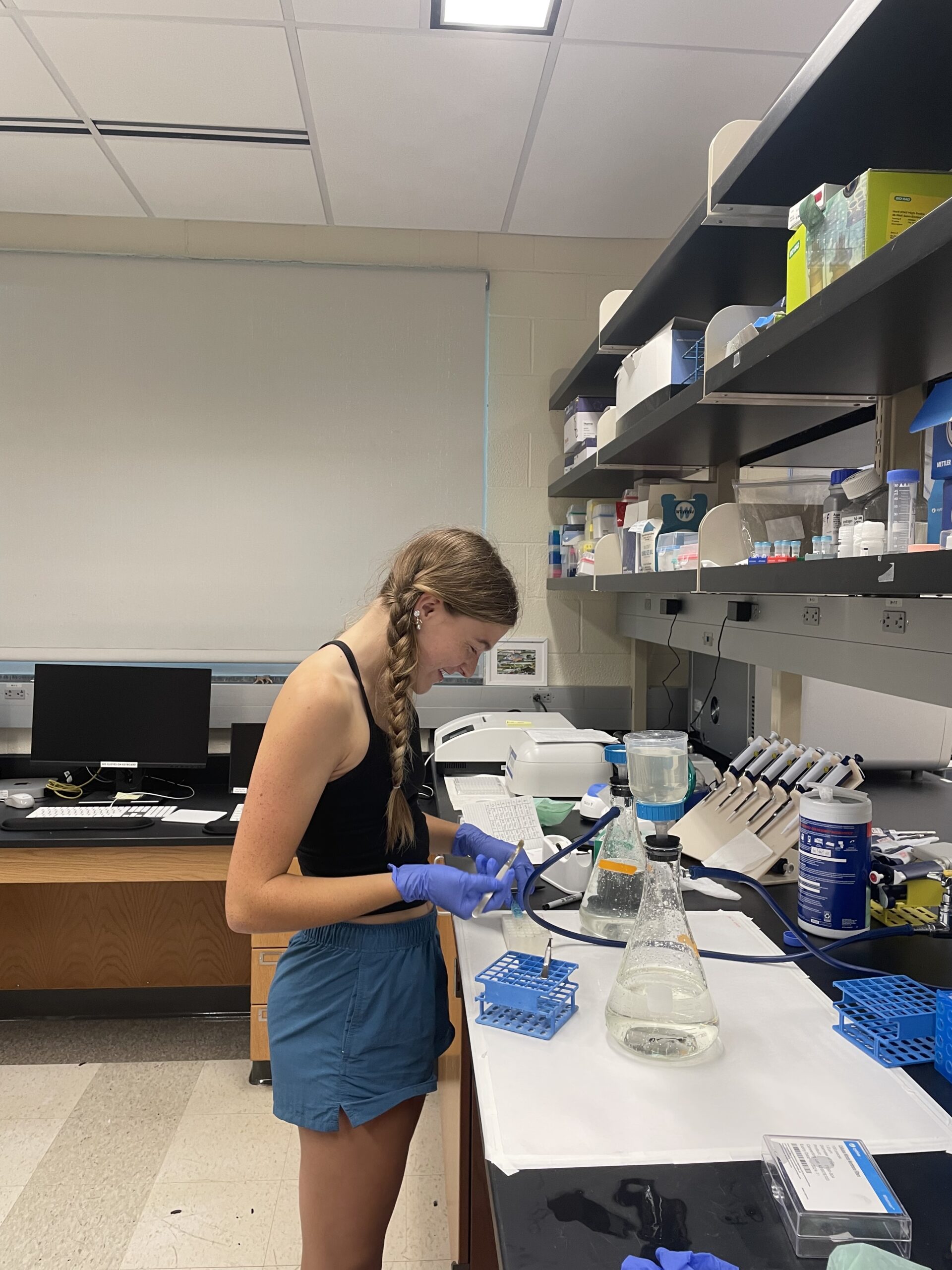
Filtering water samples in the lab right after collection in the field. We use 1 uM nitrocellulose filters and a vacuum system back. Photo: Annie Waldron
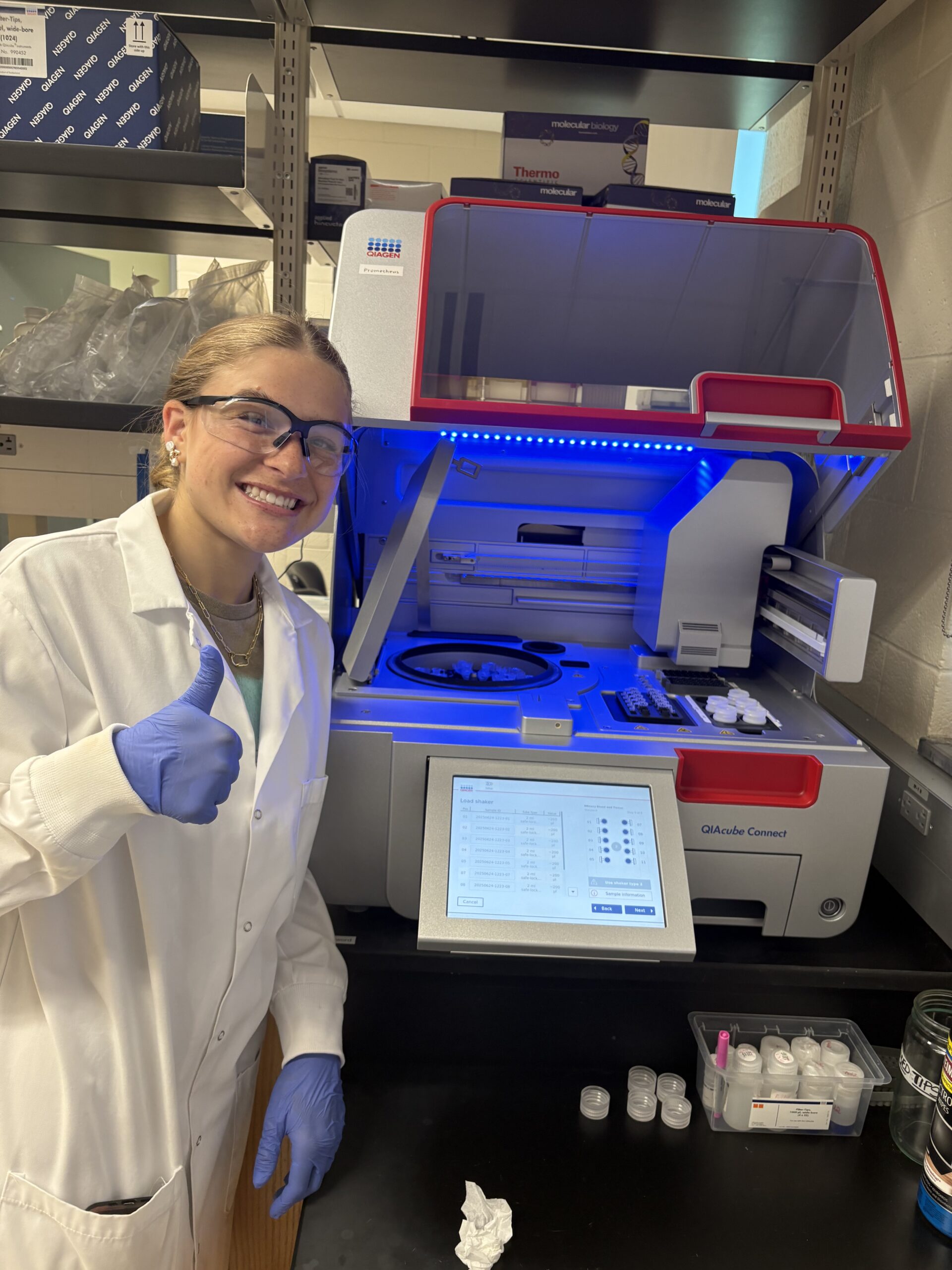
Our QIAcube Connect robot for DNA extraction. Photo: Annie Waldron
At this point in our research, we have just begun our data analysis phase based on results from qPCR runs. We have found positive detections of Lake Sturgeon eDNA in the Kalamazoo River, Kalamazoo Lake, and Lake Michigan in multiple weeks throughout our sampling period, which began in March of 2025. This is extremely valuable information regarding the species, for it gives novel insight into the timing of the Lake Sturgeon spawning run in the Kalamazoo River Basin.
The last weeks of this project will involve more sampling days, DNA extraction, PCR, and data analysis. I look forward to presenting the results of my study on Lake Sturgeon eDNA monitoring at the Michigan Sea Grant Environmental Internship Symposium in mid-August. Thank you to all people and organizations who help support this project!

